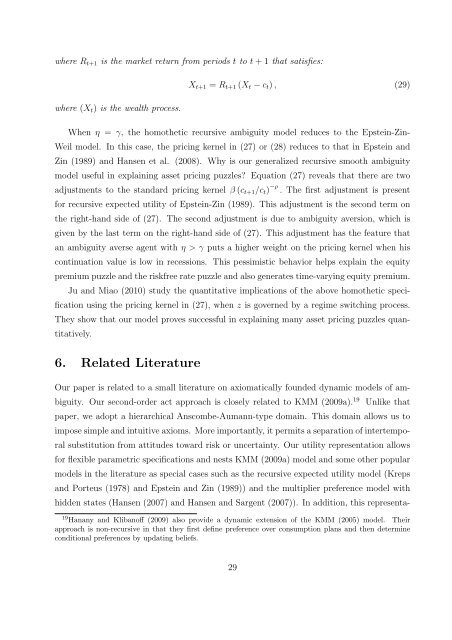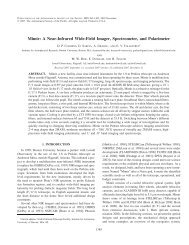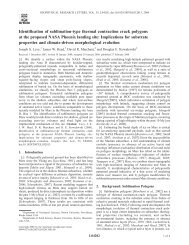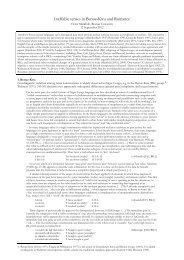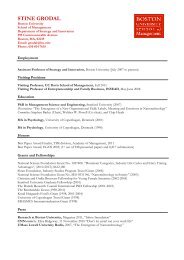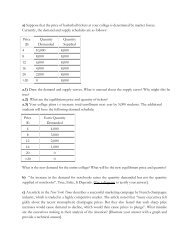Intertemporal Substitution and Recursive Smooth Ambiguity ...
Intertemporal Substitution and Recursive Smooth Ambiguity ...
Intertemporal Substitution and Recursive Smooth Ambiguity ...
You also want an ePaper? Increase the reach of your titles
YUMPU automatically turns print PDFs into web optimized ePapers that Google loves.
where R t+1 is the market return from periods t to t + 1 that satisfies:where (X t ) is the wealth process.X t+1 = R t+1 (X t − c t ) , (29)When η = γ, the homothetic recursive ambiguity model reduces to the Epstein-Zin-Weil model. In this case, the pricing kernel in (27) or (28) reduces to that in Epstein <strong>and</strong>Zin (1989) <strong>and</strong> Hansen et al. (2008). Why is our generalized recursive smooth ambiguitymodel useful in explaining asset pricing puzzles? Equation (27) reveals that there are twoadjustments to the st<strong>and</strong>ard pricing kernel β (c t+1 /c t ) −ρ . The first adjustment is presentfor recursive expected utility of Epstein-Zin (1989). This adjustment is the second term onthe right-h<strong>and</strong> side of (27). The second adjustment is due to ambiguity aversion, which isgiven by the last term on the right-h<strong>and</strong> side of (27). This adjustment has the feature thatan ambiguity averse agent with η > γ puts a higher weight on the pricing kernel when hiscontinuation value is low in recessions. This pessimistic behavior helps explain the equitypremium puzzle <strong>and</strong> the riskfree rate puzzle <strong>and</strong> also generates time-varying equity premium.Ju <strong>and</strong> Miao (2010) study the quantitative implications of the above homothetic specificationusing the pricing kernel in (27), when z is governed by a regime switching process.They show that our model proves successful in explaining many asset pricing puzzles quantitatively.6. Related LiteratureOur paper is related to a small literature on axiomatically founded dynamic models of ambiguity.Our second-order act approach is closely related to KMM (2009a). 19Unlike thatpaper, we adopt a hierarchical Anscombe-Aumann-type domain. This domain allows us toimpose simple <strong>and</strong> intuitive axioms. More importantly, it permits a separation of intertemporalsubstitution from attitudes toward risk or uncertainty. Our utility representation allowsfor flexible parametric specifications <strong>and</strong> nests KMM (2009a) model <strong>and</strong> some other popularmodels in the literature as special cases such as the recursive expected utility model (Kreps<strong>and</strong> Porteus (1978) <strong>and</strong> Epstein <strong>and</strong> Zin (1989)) <strong>and</strong> the multiplier preference model withhidden states (Hansen (2007) <strong>and</strong> Hansen <strong>and</strong> Sargent (2007)). In addition, this representa-19 Hanany <strong>and</strong> Klibanoff (2009) also provide a dynamic extension of the KMM (2005) model. Theirapproach is non-recursive in that they first define preference over consumption plans <strong>and</strong> then determineconditional preferences by updating beliefs.29


